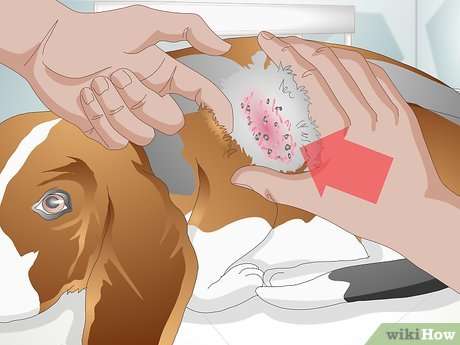Yeast infections in dogs are more common than many pet owners realize. These infections can lead to severe itching, bad smell, red or irritated skin, and constant ear scratching. If your dog seems uncomfortable, especially with recurring skin or ear problems, it may be due to an overgrowth of yeast.
Learn more about: Can dogs eat zucchini
The good news is that there are natural ways to deal with yeast in dogs without relying only on medications. This guide will explain what causes yeast overgrowth, what foods to avoid, and what natural remedies might help restore your dog’s health and comfort.

🔍 What Is a Yeast Infection in Dogs?
A yeast infection is an overgrowth of Malassezia pachydermatis, a yeast-like fungus that naturally lives on your dog’s skin.
Usually, this microbe is harmless. However, certain factors can upset the skin’s balance and cause the yeast to multiply too much, leading to an infection.
Common Signs of Yeast Infections:
- Itchy skin, paws, or ears
- Red, inflamed, or flaky skin
- Unpleasant cheesy or musty smell
- Hair loss in affected areas
- Darkened or thickened skin
- Repeated ear infections
- Constant licking or chewing of paws
If your dog shows one or more of these symptoms, it’s best to consult your veterinarian to get a proper diagnosis.
🧪 What Causes Yeast Overgrowth in Dogs?
Understanding the main causes is important for effective treatment.
Yeast overgrowth often happens because of:
- Allergies (either food or environmental)
- Excess moisture on the skin (common in ears, folds, or paws.
- A weakened immune system
- Too much use of antibiotics or steroids
- A high-carbohydrate or sugar-rich diet
- Underlying health conditions like hypothyroidism
❓ What Foods Increase Yeast in Dogs?
Some ingredients and dietary habits can promote yeast growth. Cutting back or eliminating these from your dog’s diet can help manage the condition:
High-Starch Carbohydrates
Grains like wheat, corn, rice, and potatoes break down into sugars, which can feed yeast. Dogs with yeast issues often respond better to low-carb or grain-free diets.
Sugary Fruits and Vegetables
While fruits like bananas or sweet potatoes are okay for healthy dogs, they can make yeast problems worse because of their natural sugar content.
Highly Processed Kibble
Dry dog food often includes fillers and carbs that encourage yeast. The high heat used in making it can also damage beneficial nutrients and enzymes.
Artificial Preservatives and Colorants
These synthetic additives might cause skin and gut issues, which can indirectly help yeast grow.
✅ What Naturally Kills Yeast in Dogs?
Here are some natural remedies and methods that may help control yeast infections in dogs safely and effectively:
Apple Cider Vinegar (ACV)
Apple cider vinegar has acetic acid, which has antifungal properties. When properly diluted, it can help balance skin pH and reduce yeast on the skin surface.
- How to Use: Mix equal parts of apple cider vinegar and water. Spray or dab gently on affected areas (avoid open wounds). You can also use it in a paw soak.
- Note: Do not use ACV in the ears or on broken skin.
Coconut Oil
Coconut oil contains lauric acid and caprylic acid, both of which help fight fungi like yeast. It also helps soothe dry, itchy skin and improve moisture balance.
- How to Use: Apply a small amount topically to itchy or flaky spots. You can also add it to your dog’s food (start with ¼ tsp for small dogs and 1 tsp for larger dogs).
Probiotics
Yeast overgrowth often starts in the gut. Probiotics help support digestive health and maintain good bacteria in the intestinal tract, which can prevent harmful yeast from growing.
- Sources: Choose dog-specific probiotic supplements or give natural probiotic foods like plain, unsweetened yogurt or kefir (if tolerated).
Antifungal Herbs
Herbs like oregano, paudarco, and goldenseal have natural antifungal effects. Some supplements for dogs combine these with probiotics and digestive enzymes to fight yeast internally.
- Important: Always check with your vet before using herbal remedies, especially for long-term use.
Anti-Yeast Dog Shampoo
Medicated or herbal shampoos that include ingredients like chlorhexidine, ketoconazole, tea tree oil (used carefully), or aloe vera may help relieve skin symptoms.
- Use: Bathe your dog 1–2 times a week, depending on the infection’s severity. Make sure to rinse and dry thoroughly to prevent moisture buildup.
Balanced, Low-Carb Diet
A proper diet is essential for long-term yeast control. Opt for a high-protein, low-starch, anti-inflammatory diet. Avoid kibble with high grain or sugar content.
Better Choices Include:
- Raw or lightly cooked meals
- Grain-free commercial dog food (with minimal ingredients)
- Diets rich in omega-3s (like fish oil or flaxseed oil)
Pro Tip: Work with your vet or a canine nutritionist when making changes to your dog’s diet.
🥩 Best Foods for Dogs with Yeast Infections
Here are some examples of foods that may help fight yeast from the inside:
| Food Type | Benefits |
|---|---|
| Plain, unsweetened yogurt | Natural probiotics for gut health |
| Coconut oil | Antifungal, improves skin condition |
| Salmon or sardines | Rich in omega-3, anti-inflammatory |
| Leafy greens (spinach, kale) | Low in sugar, packed with nutrients |
| Pumpkin (plain, no sugar) | Fiber-rich, supports digestion |
| Bone broth | Helps repair gut lining |
Avoid high-sugar treats and table scraps to maintain balance.
💡 Preventing Yeast Infections in the Future
Here’s how to keep yeast infections at bay long-term:
- Dry your dog thoroughly after baths, swimming, or walking in the rain—especially in ears and paws.
- Clean ears regularly with a dog-safe ear cleaner (avoid harsh products).
- Wipe paws daily, especially if your dog spends a lot of time outside.
- Avoid overusing antibiotics, unless prescribed and monitored by a vet.
- Stick to a consistent, high-quality diet that limits starch and artificial additives.
- Monitor for allergies, as many dogs with chronic yeast problems have food or environmental sensitivities.
🐾 When to Consult a Veterinarian
Even though natural treatments can be beneficial, certain situations require professional care.
You should reach out to your vet if:
- Your dog’s symptoms persist for more than a week
- You observe open wounds, leaking skin, or a bad smell
- Your dog shows signs of discomfort or pain
- The infection recurs frequently or spreads rapidly
Your veterinarian may suggest antifungal drugs, powerful prescription shampoos, or diagnostic tests to determine the underlying reason.
❓ Frequently Asked Questions:
Using a vet-approved antifungal shampoo along with a low-carb, high-probiotic diet usually helps speed up recovery. Natural options like apple cider vinegar or coconut oil can also support this process.
Yes, but only after mixing it with water in a 50/50 ratio. Avoid using it on open sores or sensitive ears.
Yes, they can help balance the gut and combat yeast buildup inside the body. Opt for products specifically made for dogs or those recommended by your vet.
Coconut oil has natural antifungal qualities and can ease dry, itchy skin. Use it both on the skin and in food, but with care.
Yes, diets rich in starches or sugars can promote yeast growth and lead to skin or ear infections. Changing to a low-carb diet often helps reduce symptoms.
Conclusion
Yeast infections can make your dog feel uncomfortable, but you do not always need strong medications to see improvement.
Natural methods such as probiotics, coconut oil, and apple cider vinegar can be effective, especially when combined with the right diet and cleaning routines.
Always consult your vet before trying new treatments. A customized plan that targets both the symptoms and the root cause will give your dog the best chance for long-term relief. With proper attention and care, your dog can enjoy a healthier, itch-free life, naturally.


Pingback: Are Green Beans Good for Dogs? Benefits, Risks & Serving Tips -